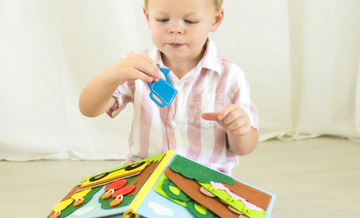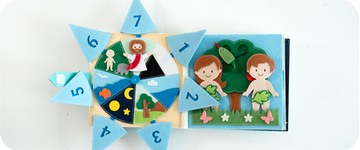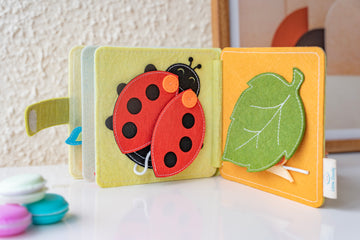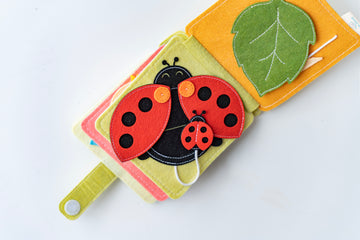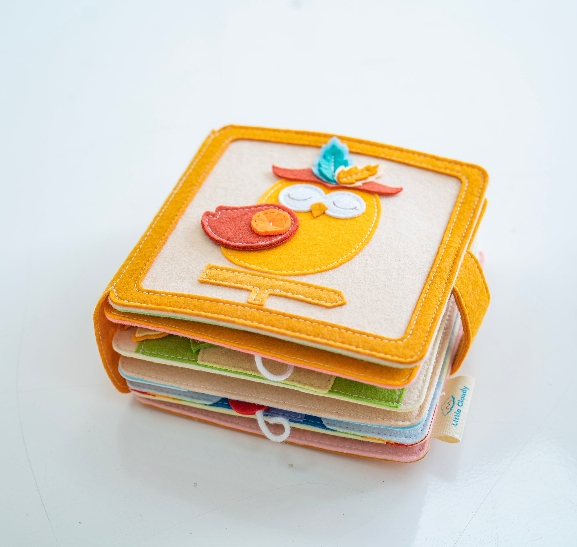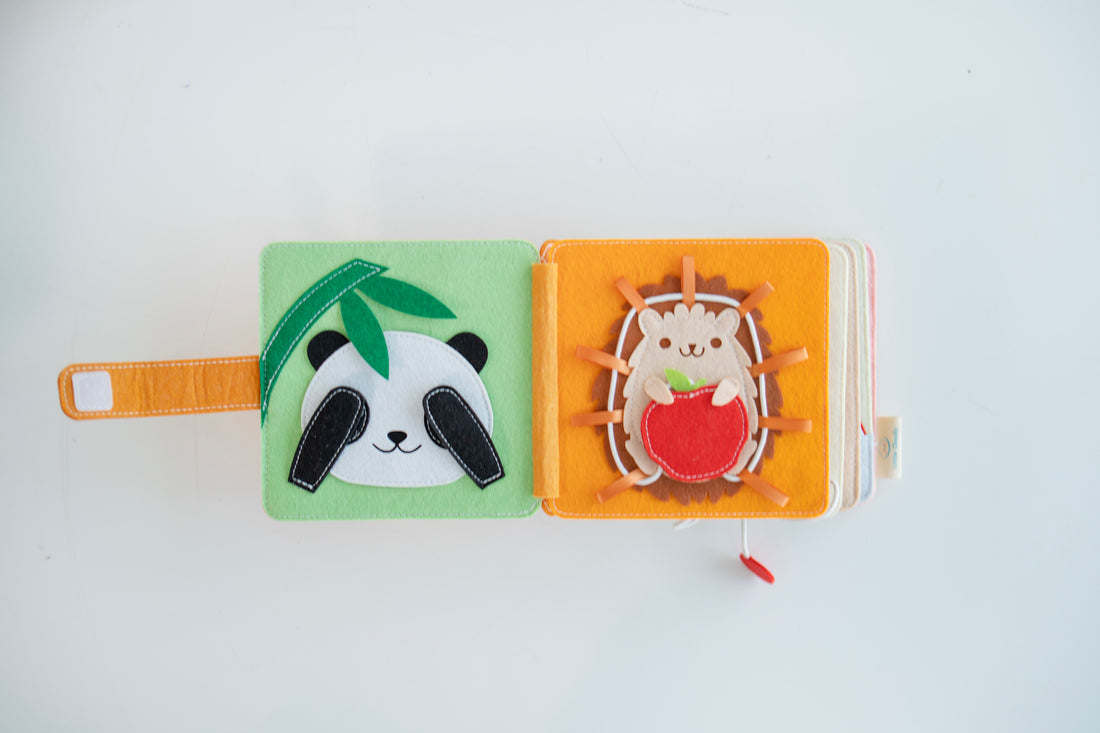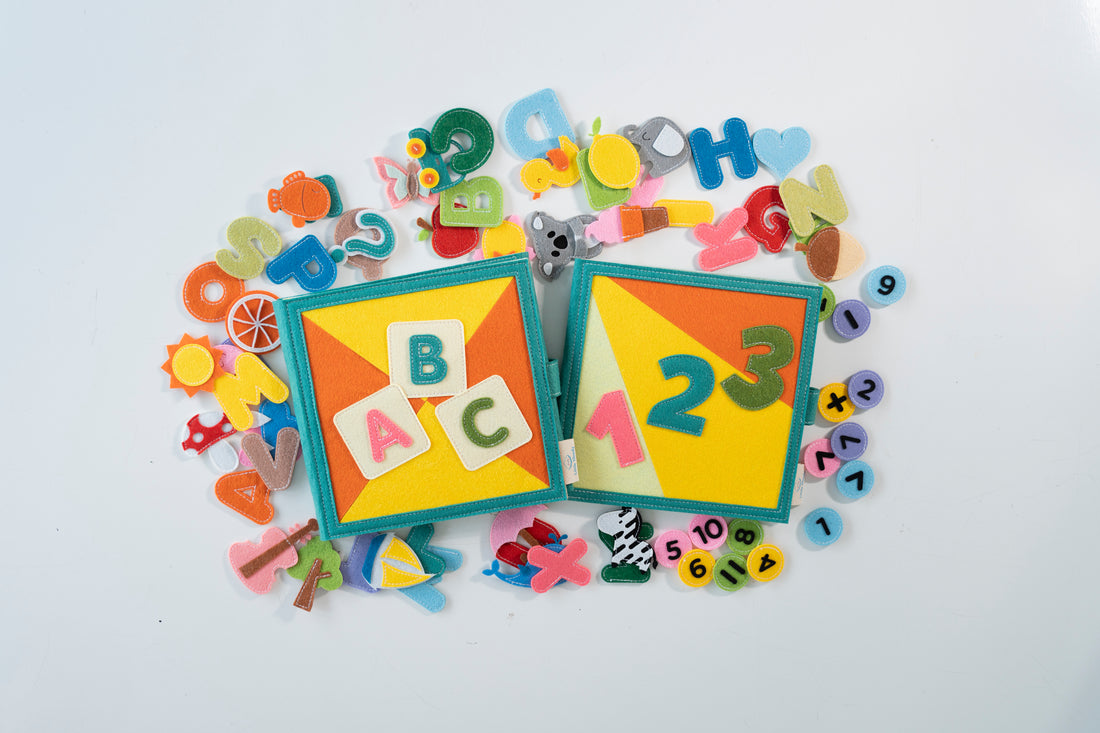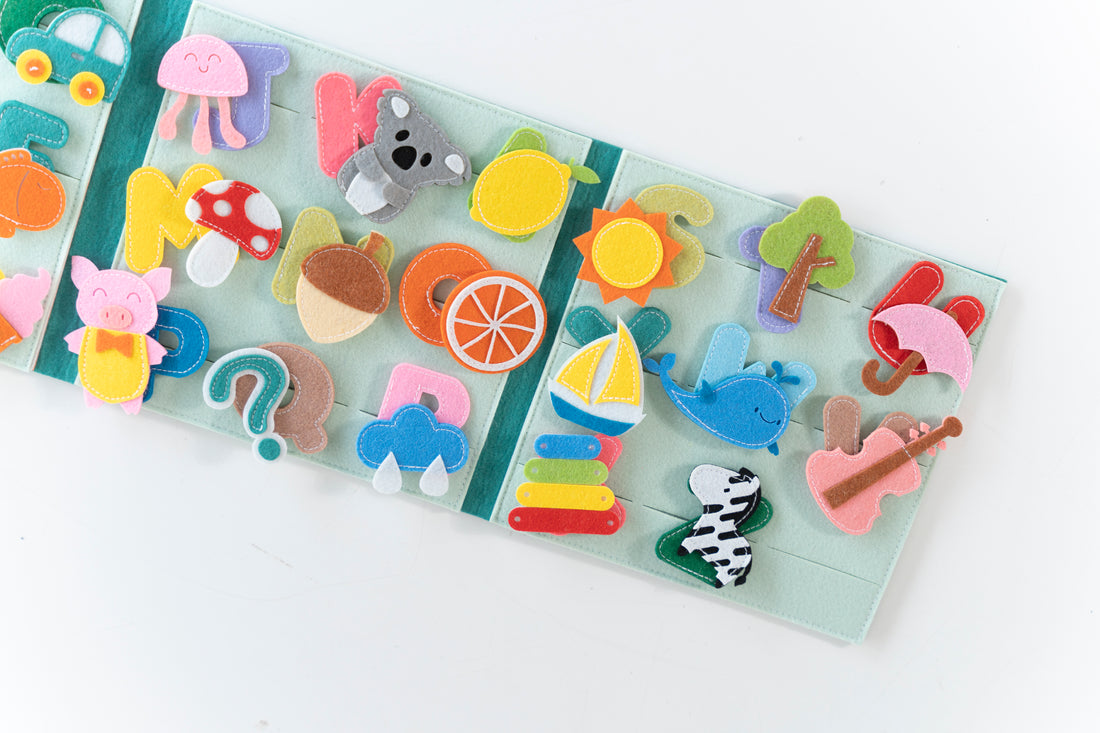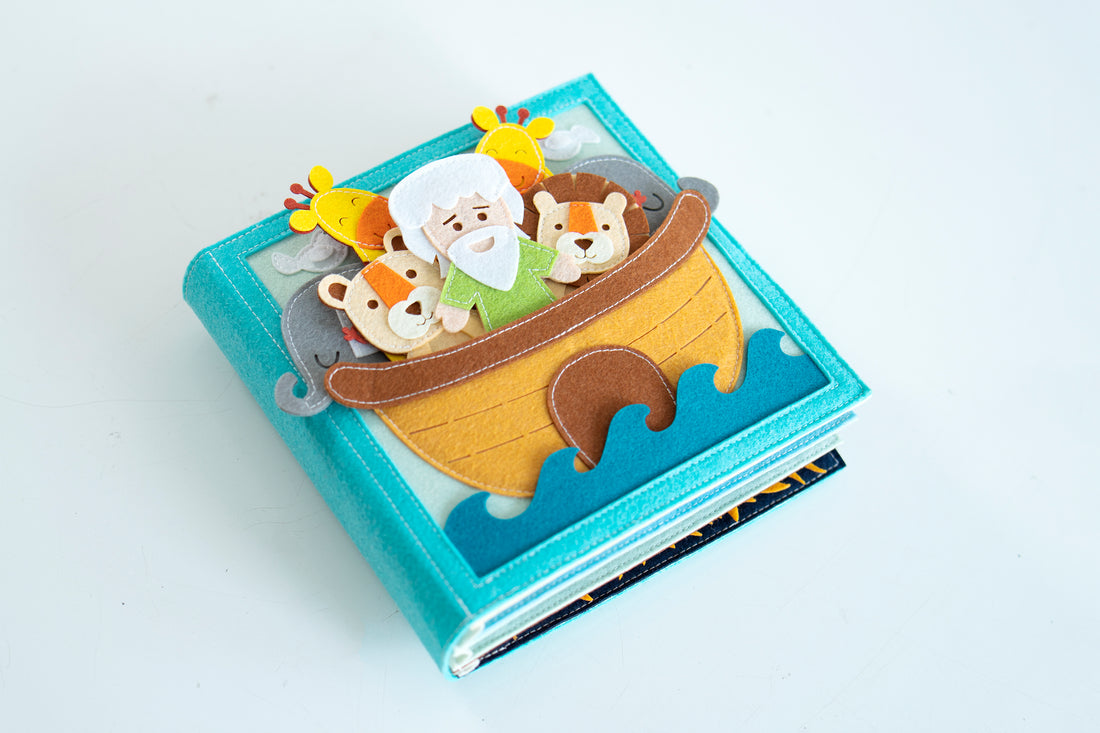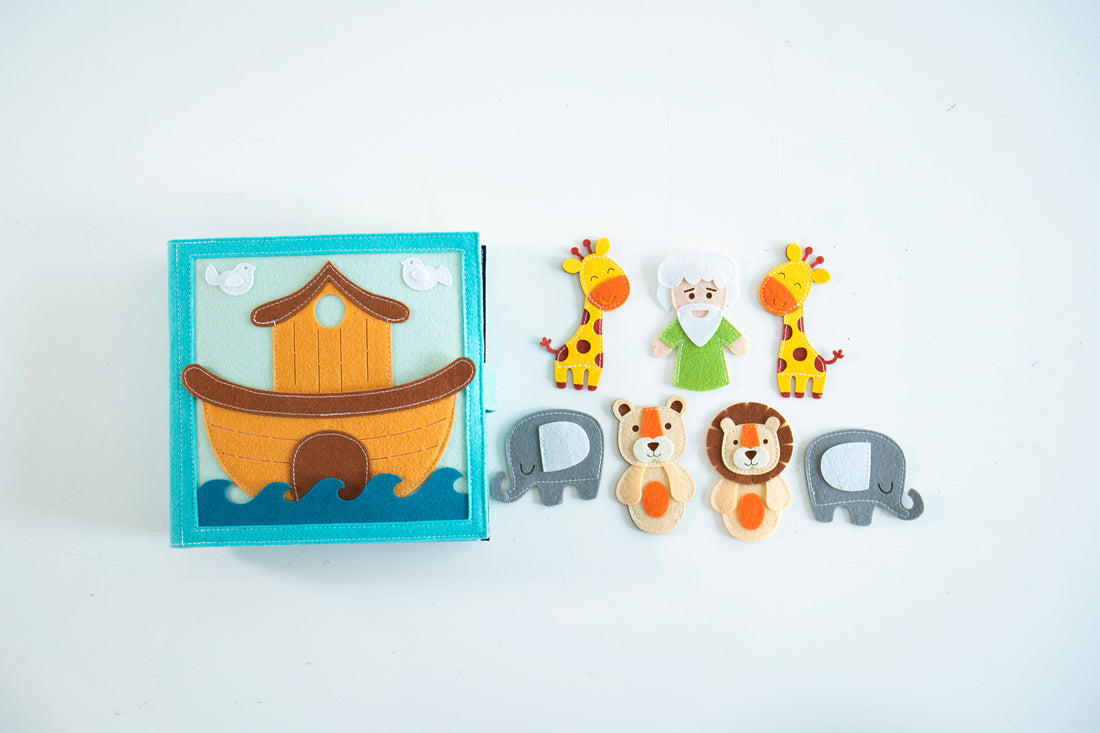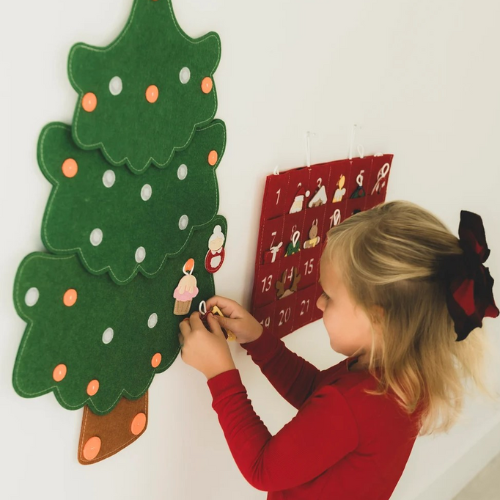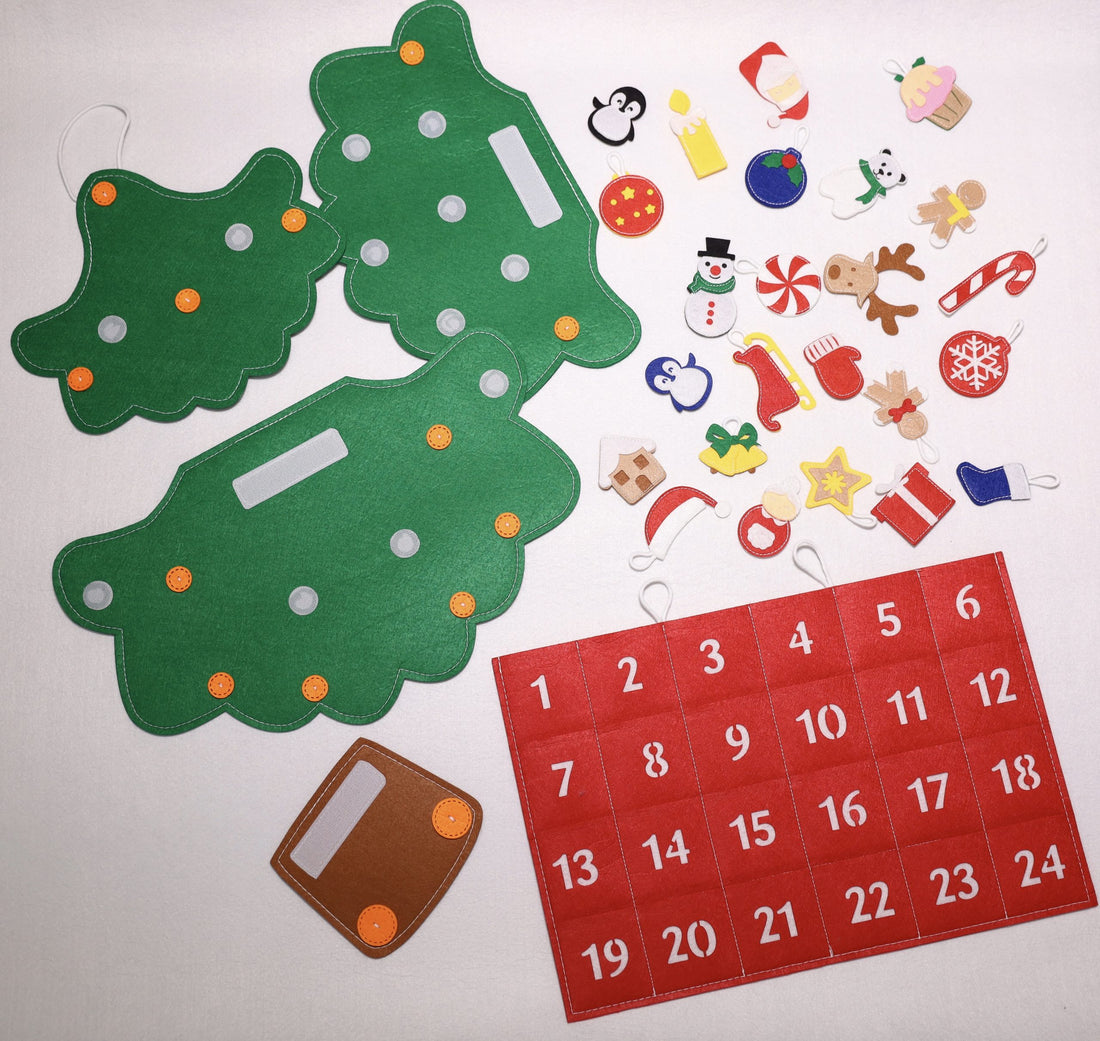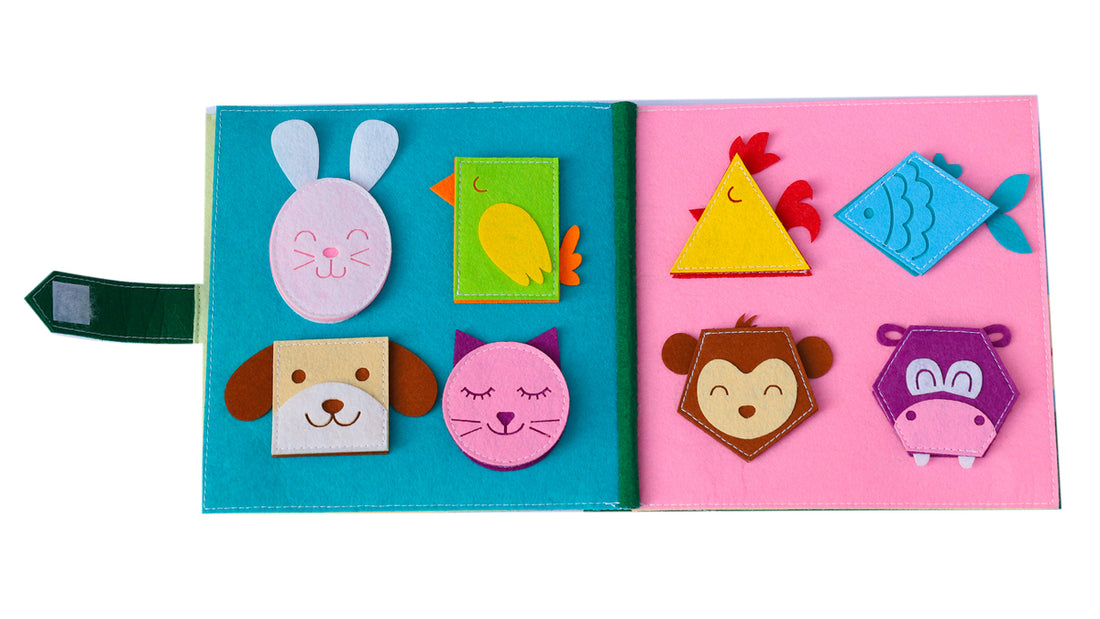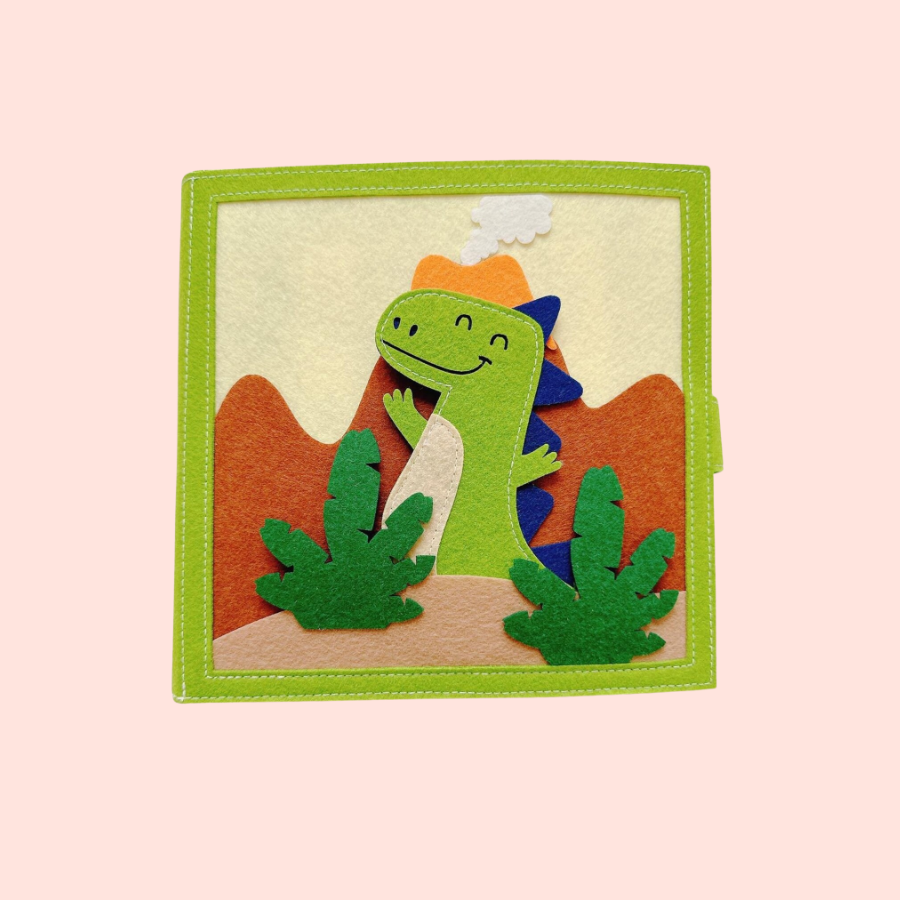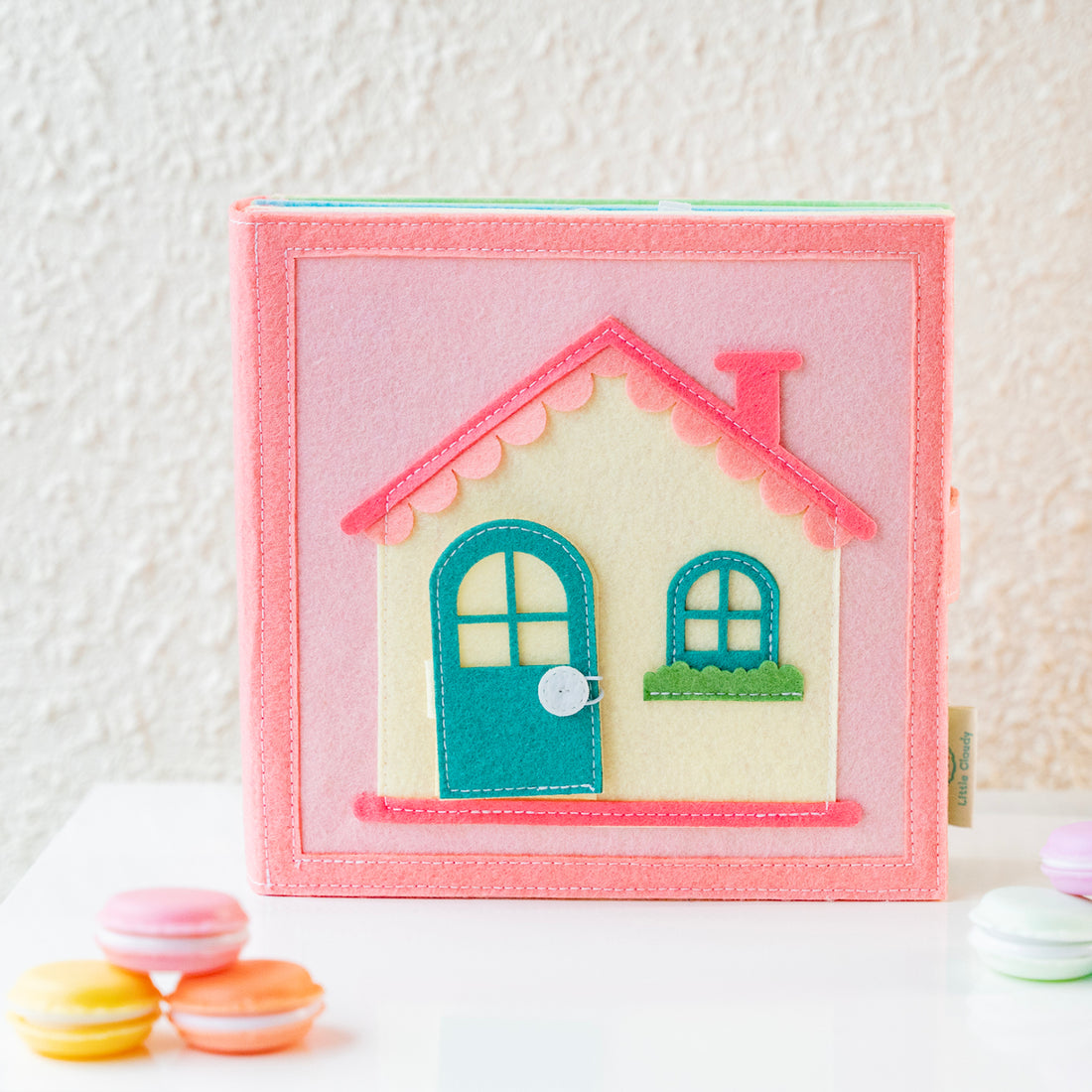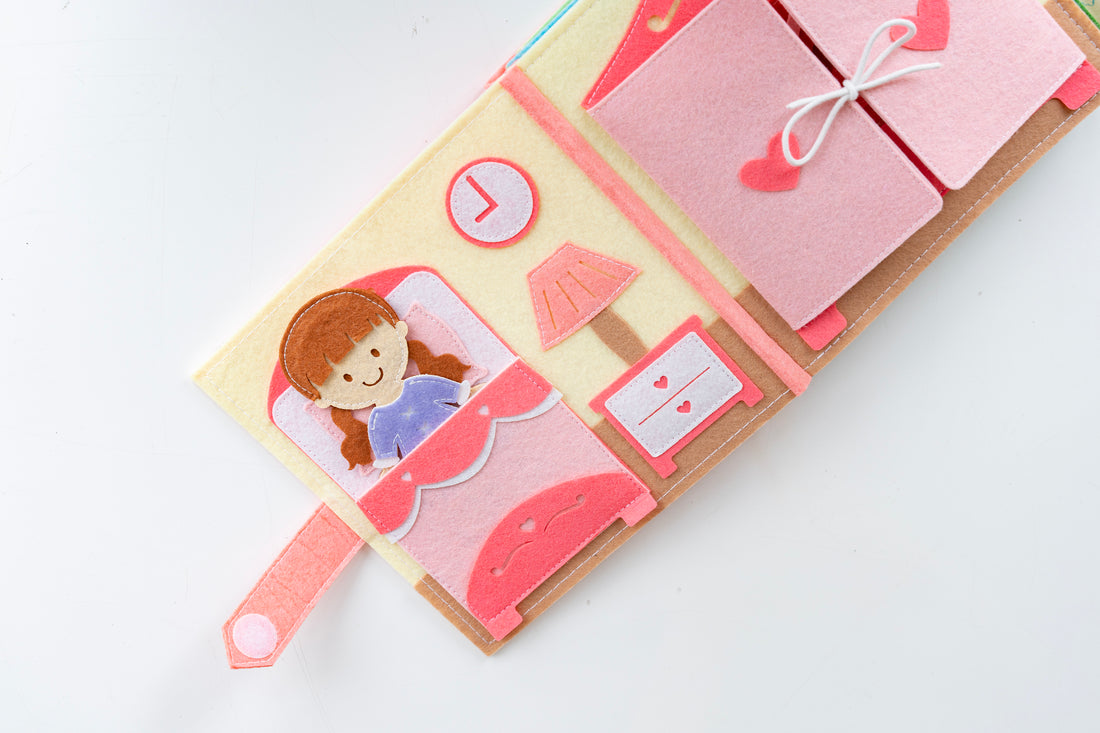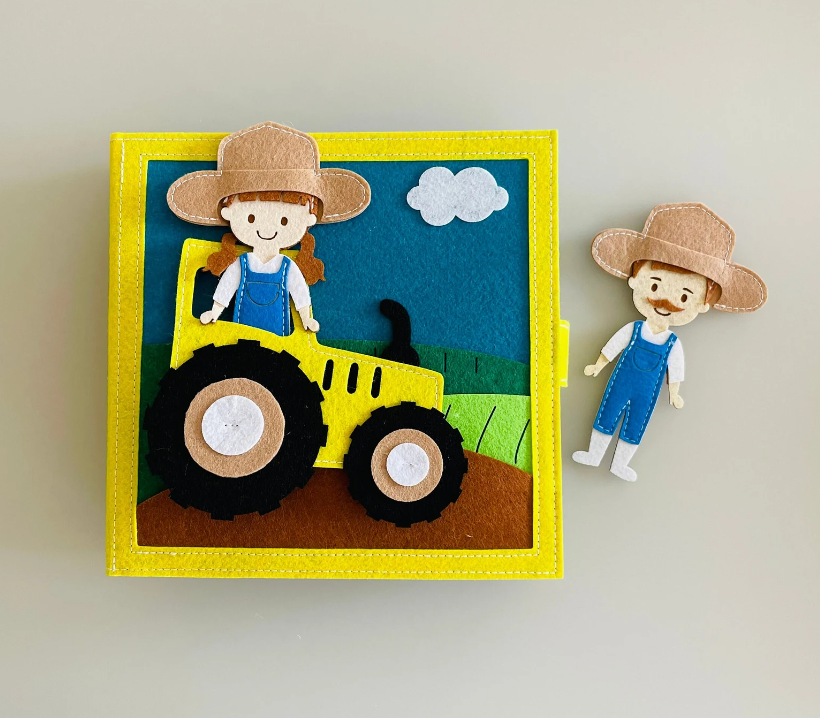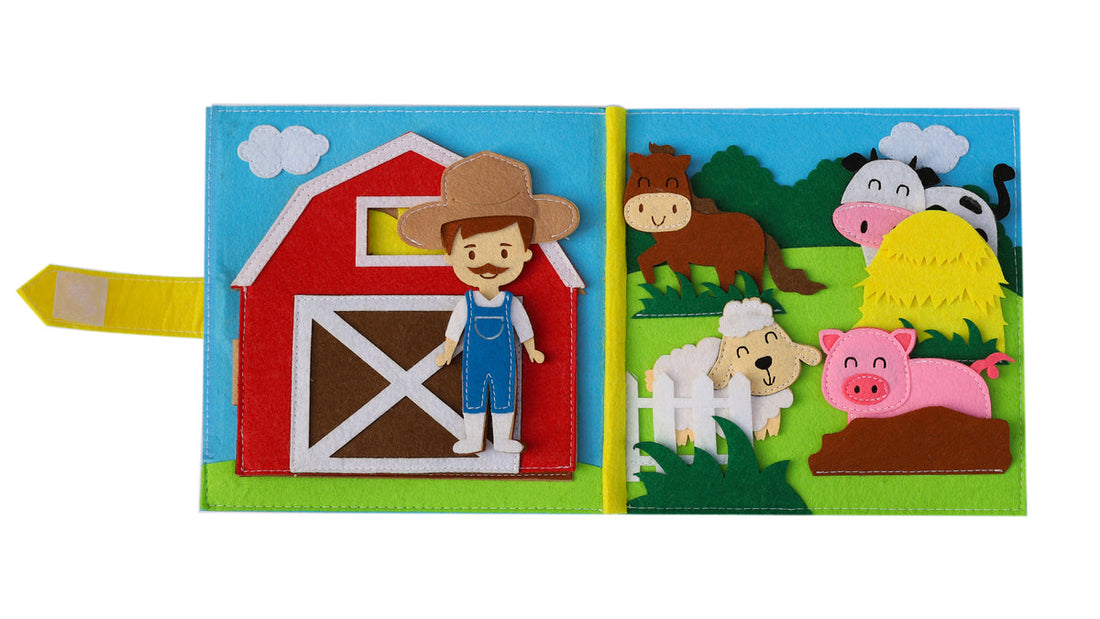Quiet books, also known as 'busy books,' are a fantastic way to keep your little one entertained while improving their cognitive and motor skills. These books have interactive elements that engage your toddler in tactile and sensory play, making learning fun and exciting.
Whether you're looking for books to develop fine motor skills or ones that foster cognitive development, there's something for every child. Plus, we've got a range of easy-to-clean and durable options that are perfect for those messy toddler years.
So, let's dive in and make reading time both fun and educational, enhancing your toddler's learning experience one quiet book at a time.
Understanding the Concept of 'Quiet Books'
You're probably wondering, what's a 'quiet book' and how can it keep my lively 2-year-old engaged? Well, let's dive into the wonderful world of quiet books for 2-year-olds.
These are not your typical storybooks. Rather, they're interactive, fabric-based books filled with engaging activities. They're designed to develop your toddler's fine motor skills and cognitive abilities.
Quiet books, also known as Montessori busy books, are a fantastic tool for keeping your little one busy and quiet. This is where the term 'busy book' comes from. Each page of a Montessori busy book contains a unique activity. It could be buttoning a shirt, tying a shoelace, or identifying colors and shapes. These tasks help your toddler practice and master life skills while having fun.
Montessori busy books for toddlers are a hit because they're so much more than just books. They're a plaything, a learning tool, and a source of quiet time all rolled into one. So next time you're looking for a way to keep your toddler engaged without resorting to screen time, consider a toddler's busy book. They're a great way to promote independent play and learning.
Top Picks for Tactile and Sensory Play
It's essential to find interactive play options that stimulate your child's sense of touch and perception, fostering their cognitive growth. Quiet books, especially those designed for tactile and sensory play, are ideal for this purpose. They offer your little ones a constructive way to explore and understand their world, all while keeping them engaged and entertained.
One of the top picks in this category is the 'My Quiet Book' by Pockets of Learning. It's a fabric activity book filled with zippers, buttons, shapes, and textures, providing a plethora of sensory experiences for your toddler.
Another great choice is 'Mudpuppy's Felt Friends Craft Kit.' This is more than just a book; it's an interactive craft project that allows your child to create their felt animal friends.
If you're looking for something more advanced, 'Montessori Quiet Book' by COZYTIME is a good pick. It offers more complex activities like knot tying and weaving, which can help refine your child's motor skills.
Quiet books not only keep your little ones calm and engaged but also aid in their overall development. So, don't hesitate to add these fantastic books to your child's playtime essentials.
Best Interactive Books for Toddlers
When it comes to keeping your little one entertained and educated, there's nothing quite like interactive books designed specifically for toddlers. These books aren't just visually appealing; they also offer engaging activities that'll keep your child's focus while promoting cognitive development and fine motor skills.For instance, 'Lift-the-Flap Tab: Farm' by Roger Priddy is a terrific interactive book that introduces toddlers to farm animals. Each page has a flap that, when lifted, reveals a different animal. It's the perfect blend of fun and education.
'Dear Zoo: A Lift-the-Flap Book' by Rod Campbell is another great choice. It's a delightful tale of a child who writes to the zoo asking for a pet. Each page features a different animal hidden behind a flap, adding an element of surprise to the reading experience.
'Peek-A Who?' by Nina Laden is a simple yet highly entertaining book that uses rhymes and peek-a-boo cut-outs to engage toddlers. It's a charming and playful choice for your little one's bookshelf.
These interactive books not only keep your child engaged but also fuel their imagination, creativity, and curiosity. So, why not add a few to your kiddo's library today?
Engaging Books for Developing Fine Motor Skills
Looking for ways to boost your toddler's fine motor skills? Consider adding some engaging interactive books to their reading routine! These books aren't just about reading, but also involve various activities that can help develop their small muscle movements.For instance, many of these books feature buttons to push, flaps to lift, and textures to feel, which all help to improve fine motor skills.
A perfect example is the 'Where's Spot?' series. These books aren't only fun and engaging but also come with several flaps that your child can lift to discover what's hiding underneath.
Another popular choice is 'Press Here' by Hervé Tullet. This interactive book encourages little fingers to press, shake, and tilt the pages, offering a fun and tactile experience while promoting fine motor control.
Ensure your toddler's reading time isn't just educational but also a motor skills training session. Remember, the key is to make the learning process enjoyable. So, keep the atmosphere light-hearted and encourage your toddler to explore these books at their own pace. You'll be surprised at how quickly they master these skills with the right books!
Books that Foster Cognitive Development
You'll find a treasure trove of interactive stories that not only entertain but also stimulate your toddler's cognitive development. These quiet books for 2-year olds are designed to spark curiosity, encourage creativity, and foster the development of problem-solving skills.Books like 'Where's Spot?' by Eric Hill, with its simple yet engaging hide-and-seek story, help your toddler to understand the concept of object permanence.
Other books like 'Pat the Bunny' by Dorothy Kunhardt, with its tactile experiences, help your child to connect the physical world with the words they're hearing, promoting sensory development.
Quiet books featuring shapes, colors, and numbers like 'My First Colors' by DK or 'Chicka Chicka 123' by Bill Martin Jr. and Lois Ehlert help establish early mathematical concepts. These books not only provide a fun and interactive reading experience, but they also pave the way for early cognitive development.
Don't underestimate the power of a good book. The right quiet book can be an incredibly effective tool in fostering cognitive development, making learning a fun and exciting journey for your toddler.
So, dive into this world of interactive stories and watch your little one grow and learn.
Easy to Clean and Durable Book Options
As a parent, it's essential to consider the durability and ease of cleaning when choosing the perfect reading material for your toddler. You'll want a book that can withstand the rough handling and inevitable messes that come with the territory of toddlerhood.So, let's discuss some options that can handle the wear and tear.
Board books are an excellent choice. They're made of sturdy material that can take a beating and are easy to wipe clean. Some even have a glossy finish, making them resistant to spills and stains. Titles like 'Goodnight, Goodnight, Construction Site' and 'The Very Hungry Caterpillar' are popular choices in this category.
Cloth books are another great option. They are soft, lightweight, and almost indestructible. Plus, many cloth books are machine washable, making cleanup a breeze. Books like 'Soft Shapes: My First Colors' are made with non-toxic, durable, and washable materials.
Remember, the key is to choose books that can stand up to your toddler's active lifestyle and still look good as new. These durable options mean you can focus more on fostering a love of reading and less on damage control.
Making Reading Time Fun and Educational
Transitioning from discussing the importance of easy-to-clean and durable books, let's now delve into making reading time both fun and educational for your 2-year-old.After all, the main aim of introducing books at an early age isn't just about durability but more importantly, fostering a love for reading and learning.
It's crucial to make reading time an exciting experience for your little one. Start by choosing quiet books that have bright, colorful illustrations to captivate their attention. Interactive books with flaps to lift or textures to feel can also be a big hit. They don't just keep your child engaged but also stimulate their senses, promoting cognitive development.
Storylines are equally important. Opt for stories that teach simple lessons or values. Your toddler will love listening to the stories, and over time, they'll start understanding the morals too. Books that introduce numbers, letters, shapes, and colors are also great educational tools.
Remember, the objective is to spark curiosity and create a positive association with books. So, don't rush the reading time. Let your child explore the book, ask questions, and even narrate the story back to you. This makes reading fun and instills a lifelong love for learning.
Enhancing Your Toddler's Learning Experience with Books
Let's dive into the ways you can amp up your toddler's learning experience with the right kind of books. Toddler's Quiet books can be your secret weapon to ensure your little one isn't just entertained but also learning.These books are specially designed to engage your toddler's senses, promoting cognitive development and fine motor skills. You can choose books with different themes, from numbers and alphabets to animals and transportation. There's a quiet book to cater to every toddler's interests.
The interactive features like zippers, buttons, flaps, and textures simulate real-life scenarios, making learning a fun and exciting experience. Remember, it's not just about reading to your toddler, but also involving them in the process. Ask them questions, encourage them to point and name things, let them touch and feel textures. This not only boosts their comprehension but also enhances their communication skills.
Choosing the right book and using it effectively can transform your toddler's learning journey. It's time to explore the world of quiet books and see how they can make a difference in your 2-year-old's development. So, don't wait any longer, and start this enriching journey today.
What are the potential safety concerns with quiet books for 2 year old?
You should be aware of potential hazards like small parts which can be a choking risk. Also, ensure the book's materials are non-toxic and the pages aren't sharp to prevent accidental cuts.Can quiet books help improve my toddler's language and speech development?
Absolutely, quiet books can significantly improve your toddler's language and speech development. They encourage verbal interaction, vocabulary building, and comprehension skills, making them a wonderful tool for early communication development.What are some tips for introducing quiet books to my 2 year old for the first time?
Start with simple books and short reading sessions. Engage your child by pointing out pictures, asking questions, and encouraging interaction. Gradually increase the complexity and length of reading time as they show interest.Are there any recommended routines or schedules for using quiet books with my toddler?
Yes, you could schedule quiet book time after lunch or before bed. Keep it consistent and aim for 15-20 minutes daily. Remember, don't force it; if they're not interested, try again another time.
Can quiet books also be used for group activities or playdates?
Absolutely! Quiet books can be used for group activities or playdates. They're great for fostering collaborative play and shared learning experiences. Plus, they can help develop social skills among the little ones.So, you're set to transform your toddler's reading time into a fun, educational, and interactive experience. With quiet books, you're not only keeping them engaged, but also fostering their cognitive and motor skills.
Remember, the best book is durable, easy to clean, and packed with sensory and tactile elements.


